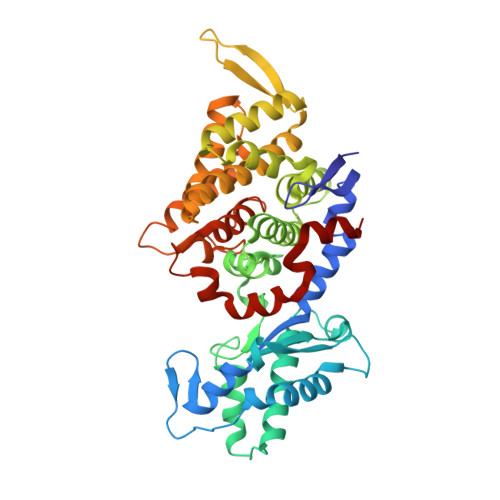Structural Insights into the Methane-Generating Enzyme from a Methoxydotrophic Methanogen Reveal a Restrained Gallery of Post-Translational Modifications.
Kurth, J.M., Muller, M.C., Welte, C.U., Wagner, T.(2021) Microorganisms 9
- PubMed: 33919946
- DOI: https://doi.org/10.3390/microorganisms9040837
- Primary Citation of Related Structures:
7NKG - PubMed Abstract:
Methanogenic archaea operate an ancient, if not primordial, metabolic pathway that releases methane as an end-product. This last step is orchestrated by the methyl-coenzyme M reductase (MCR), which uses a nickel-containing F 430 -cofactor as the catalyst. MCR astounds the scientific world by its unique reaction chemistry, its numerous post-translational modifications, and its importance in biotechnology not only for production but also for capturing the greenhouse gas methane. In this report, we investigated MCR natively isolated from Methermicoccus shengliensis . This methanogen was isolated from a high-temperature oil reservoir and has recently been shown to convert lignin and coal derivatives into methane through a process called methoxydotrophic methanogenesis. A methoxydotrophic culture was obtained by growing M. shengliensis with 3,4,5-trimethoxybenzoate as the main carbon and energy source. Under these conditions, MCR represents more than 12% of the total protein content. The native MCR structure refined at a resolution of 1.6-Å precisely depicts the organization of a dimer of heterotrimers. Despite subtle surface remodeling and complete conservation of its active site with other homologues, MCR from the thermophile M. shengliensis contains the most limited number of post-translational modifications reported so far, questioning their physiological relevance in other relatives.
Organizational Affiliation:
Department of Microbiology, Institute for Water and Wetland Research, Radboud University, Heyendaalseweg 135, 6525 AJ Nijmegen, The Netherlands.

























